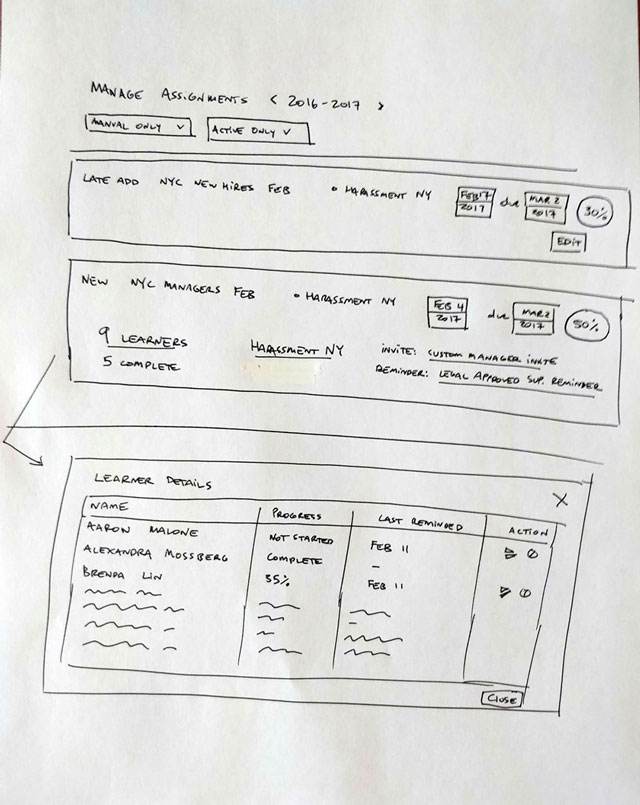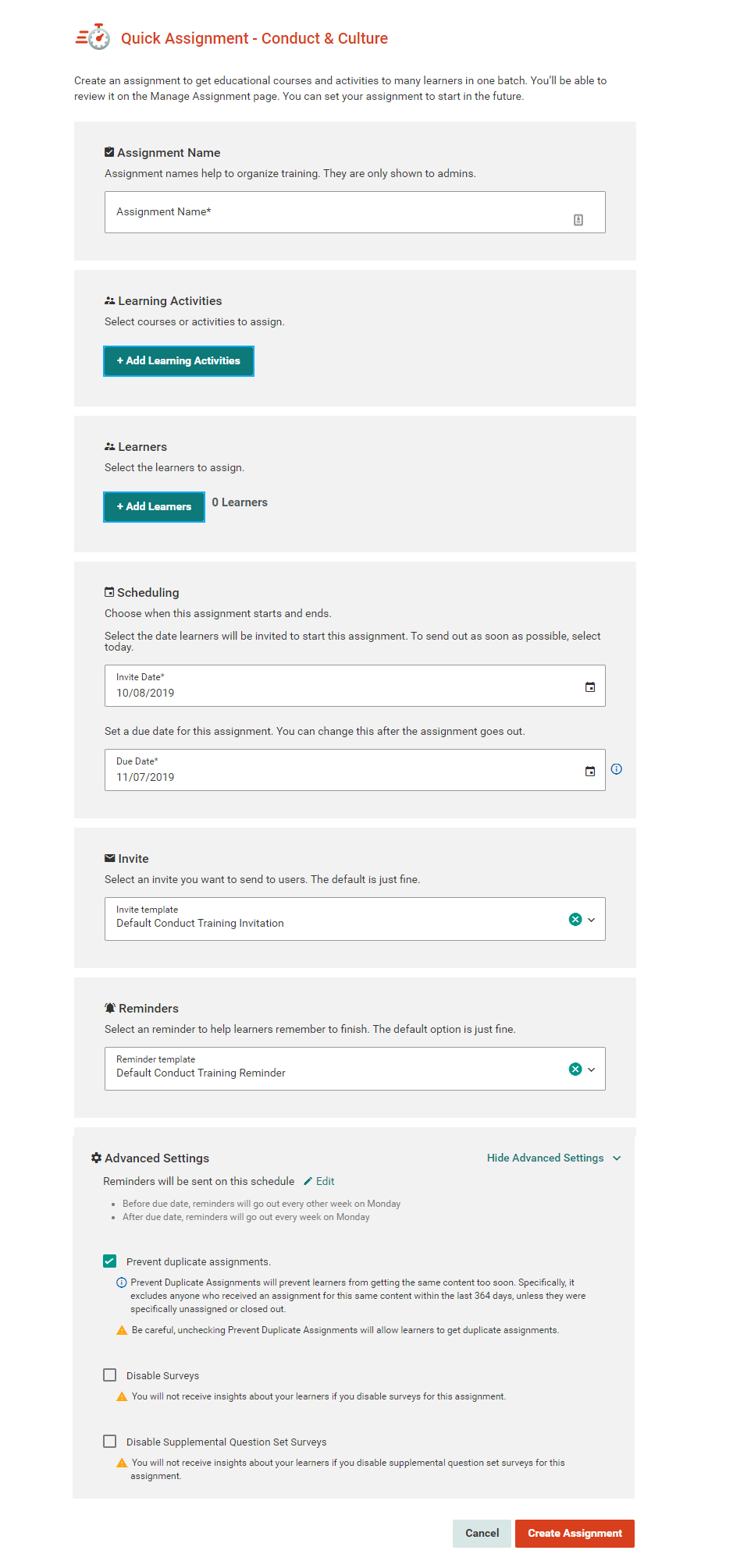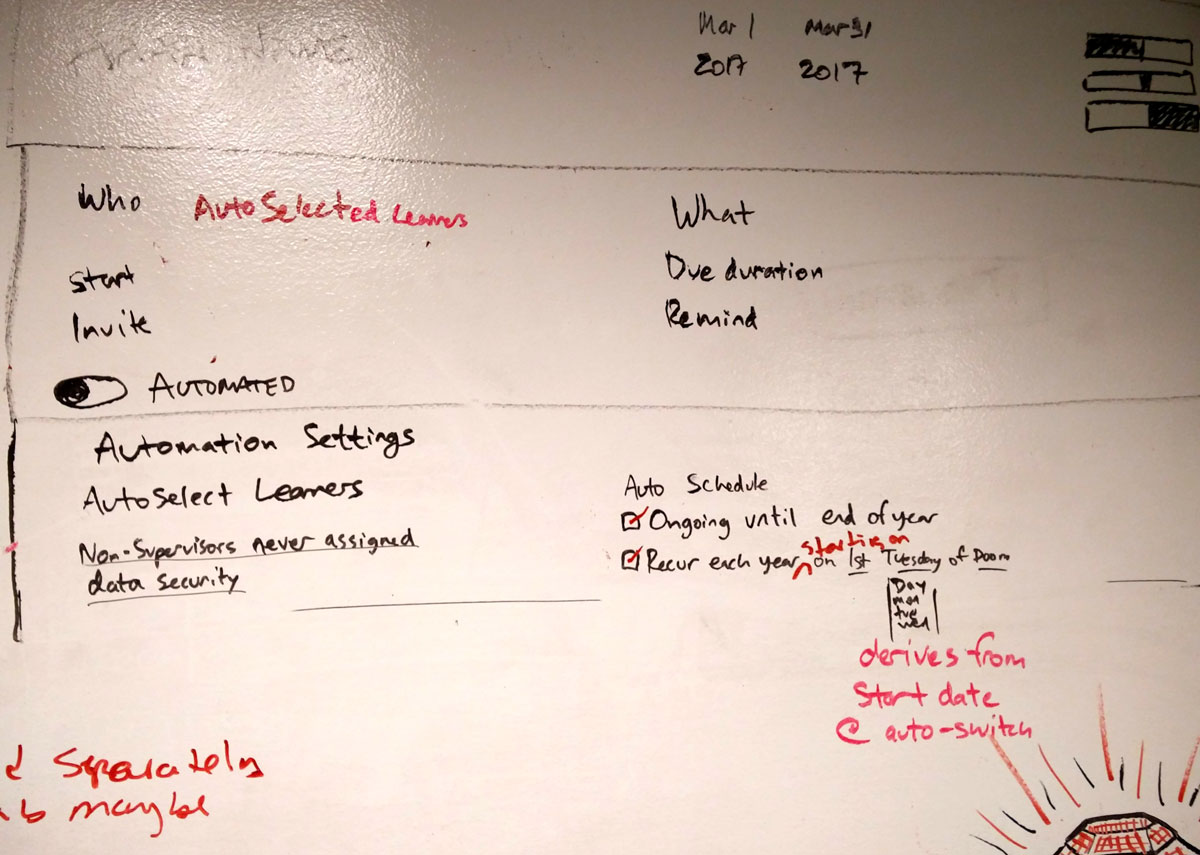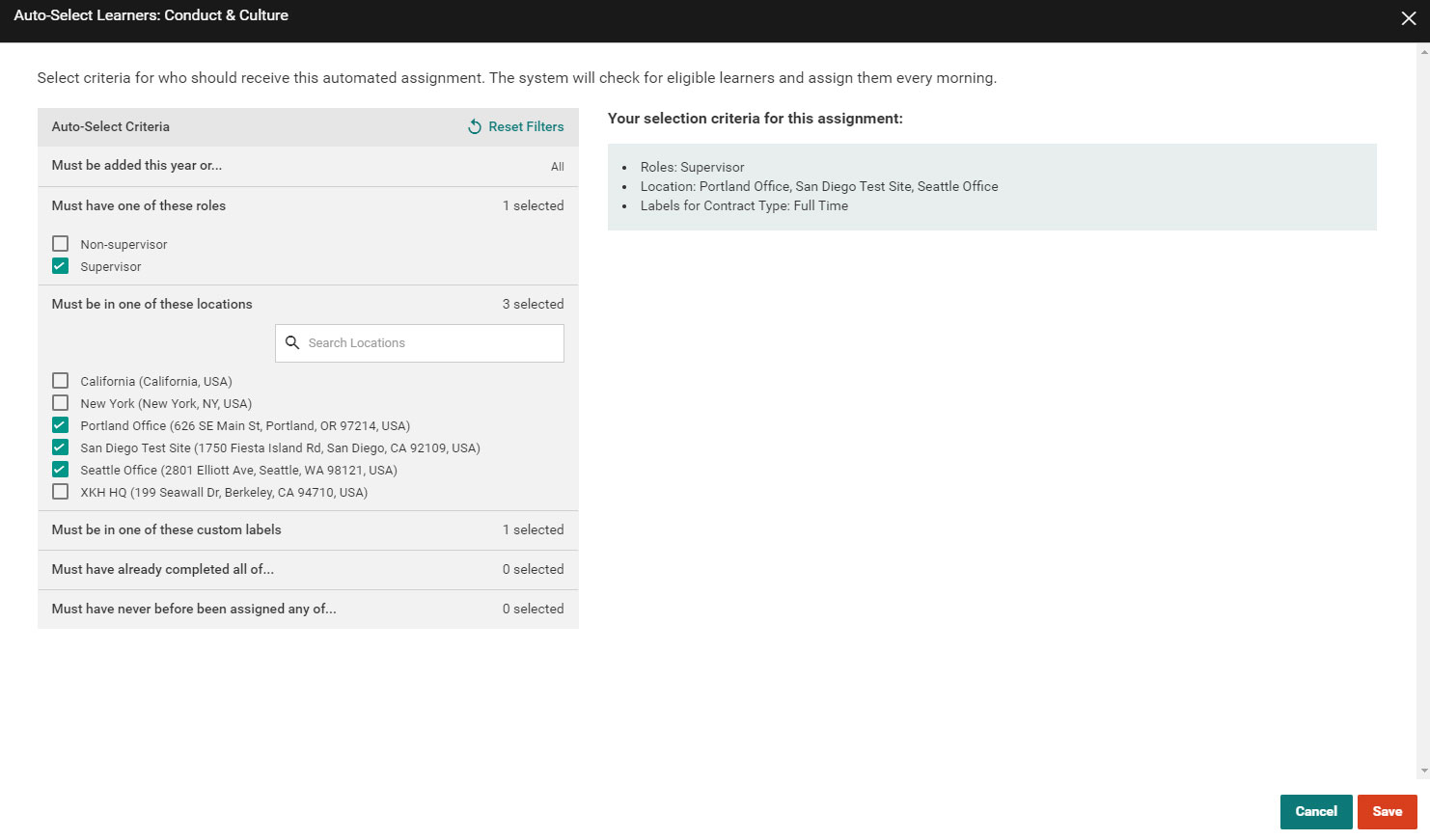At EVERFI, I came onboard to research and design a next-generation edtech platform that could handle a variety of use cases in different verticals. This case study covers the assignment UX for the Foundry project, an edtech platform used to assign harassment training at companies (among other uses).
This case study covers just the Assignment subsystem, which was essential for Higher Education and Corporate Compliance. My research showed that most assignments were made in large batches, and this research involved SQL and Python, yielding insights that had never been seen before in the company's history.
I was involved for over two years, from early brainstorming to migration and onboarding for hundreds of customers.
This sketch introduces the idea of a list of all assignments, binned by year and filtered by a couple of terms. I pushed for using cards, rather than the enterprise UX default of tables, because there is too much information.
We ended up with this assignment management screen. However, it was a constant battle trying to keep this page trim and clean as new user problems triggered quick fixes that bloated the page.
For creating new assignments, we designed this interstitial clarifying the manual assignment vs automated assignment, which was a major new feature of the platform.
The assignment creation form represented a major improvement from legacy platforms and included several critical options under "Advanced Features."
To establish value for the new platform, we had to establish a powerful feature. Our PM chose automated assignments, considering many ways to implement this.
Here was our approach to automated learner selection. We iterated on the normal filter bar design to create a two-panel design.
Ultimately, admin users need to know how many people have actually done the training they were assigned! I worked closely with the data team to simplify this report.






